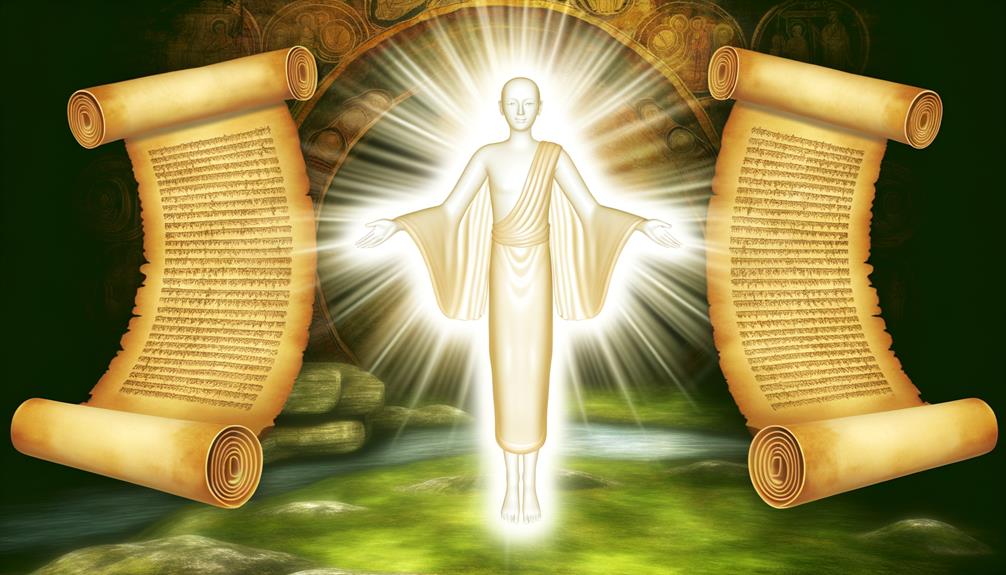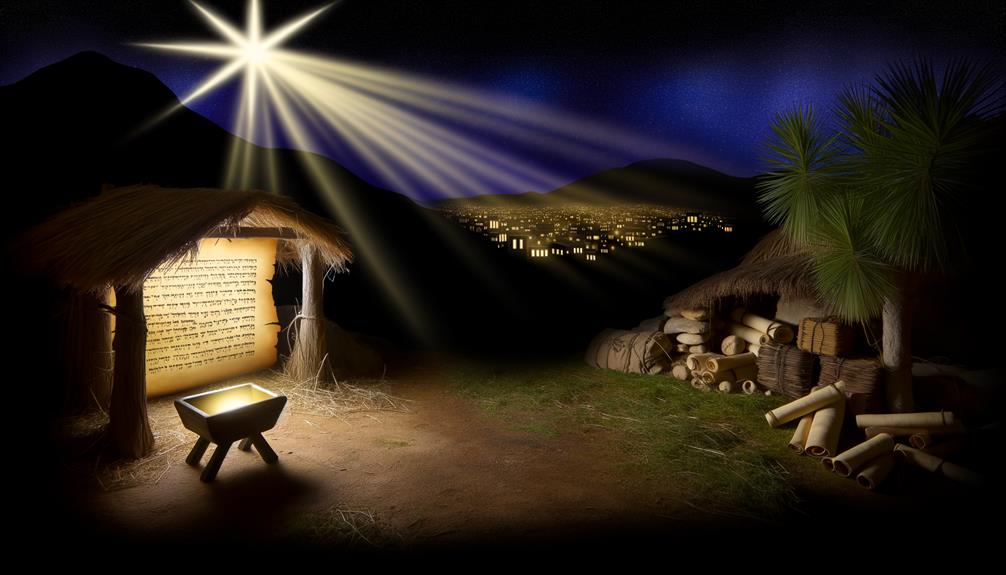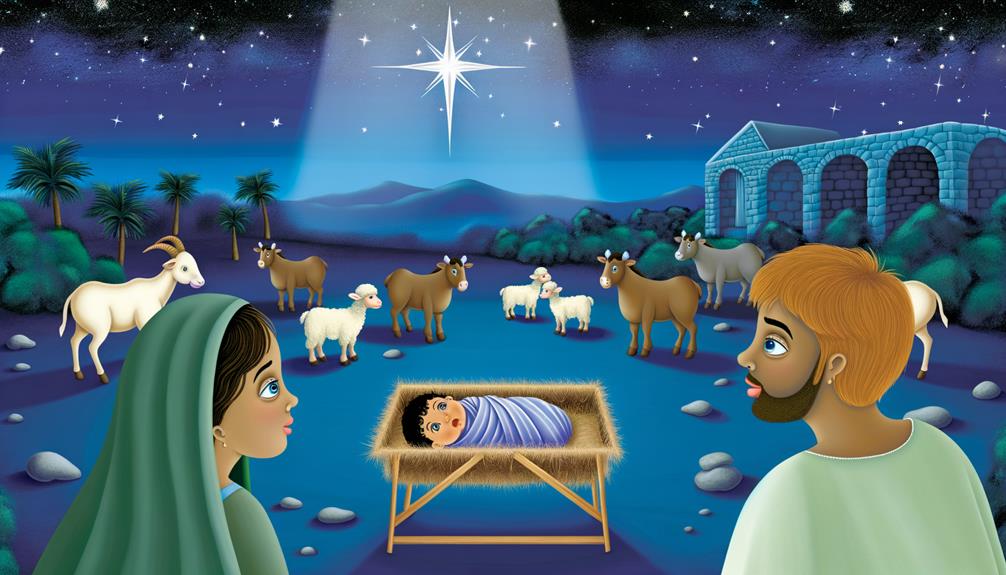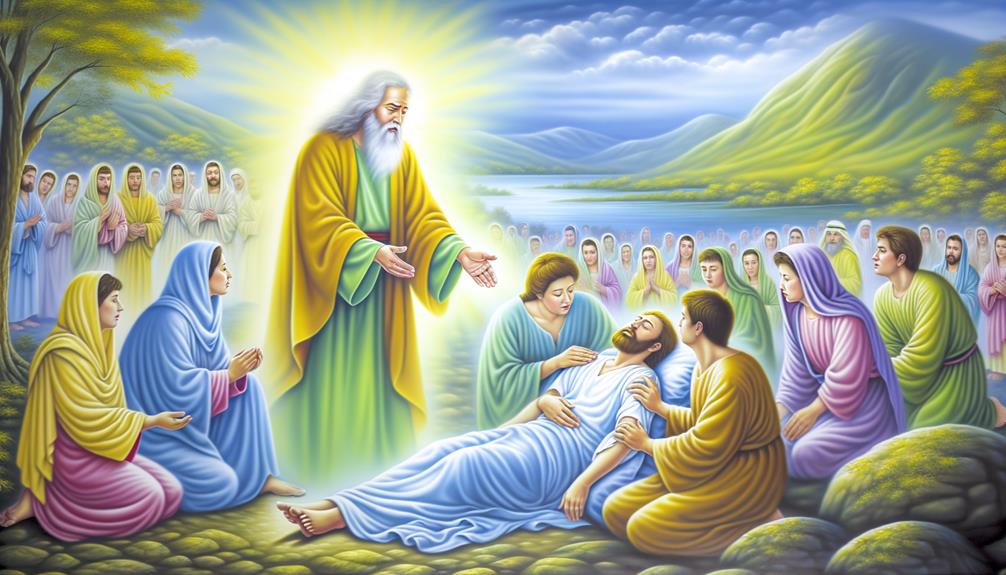Christ Meaning in Bible Verses: Savior, Anointed One
In biblical scripture, the term ‘Christ,’ derived from the Greek ‘Christos,’ translates to ‘Messiah‘ in Hebrew, signifying the anointed one prophesied to deliver salvation. Old Covenant prophecies such as Isaiah 53, Psalm 22, and Micah 5:2 foretell Christ’s suffering, birth, and mission.
The New Covenant reveals the fulfillment of these prophecies through Jesus Christ, emphasizing His divine authority and role in humanity’s redemption. His teachings, miracles, crucifixion, and resurrection underpin the core beliefs of Christianity.
To appreciate the full depth of Christ’s significance and His eternal kingdom, one must engage with these scriptural foundations thoroughly.

Christ Meaning in Bible Verses: Understanding His Role and Significance
| Aspect | Description |
|---|---|
| Definition | The title “Christ” means “Anointed One” or “Messiah,” referring to Jesus as the Savior and Redeemer. |
| Biblical References | Matthew 16:16 (Peter’s confession), John 1:41 (Jesus as Messiah), Acts 4:12, Colossians 1:15-20 |
| Significance | Represents Jesus’ divine authority, His role in salvation, and fulfillment of Old Testament prophecies. |
| Titles of Christ | Son of God, Son of Man, Savior, Redeemer, King of Kings, Lord of Lords, The Word (Logos). |
| Role in Salvation | Through His death and resurrection, Christ offers forgiveness of sins and eternal life to believers. |
| Prophetic Fulfillment | Jesus fulfills Old Testament prophecies about the coming Messiah (e.g., Isaiah 53, Micah 5:2). |
| Christ’s Divinity | Declared as the image of the invisible God and the fullness of deity in bodily form (Colossians 2:9). |
| Humanity of Christ | Jesus was fully human, experiencing emotions, suffering, and death, yet without sin (Hebrews 4:15). |
| Theological Importance | Central figure in Christianity, the foundation of faith, representing God’s love, grace, and redemption. |
| Related Concepts | Messiah, Salvation, Trinity, Resurrection, Gospel, Kingdom of God, Faith, Grace, Redemption. |
Prophecies of the Messiah

The prophecies of the Messiah, embedded within Old Scriptures, serve as foundational texts that foretell the coming of Christ and outline His divine mission. These prophecies, found in texts such as Isaiah 53, Psalm 22, and Micah 5:2, provide detailed descriptions of the Messiah’s suffering, death, and eventual triumph.
Isaiah 53 speaks of a ‘Suffering Servant‘ who bears the iniquities of humanity, while Psalm 22 vividly describes His anguish. Micah 5:2 predicts the birthplace of the Messiah, establishing a timeline for His arrival.
These prophetic scriptures serve not only as a foretelling but also as a witness to the divine orchestration of salvation history, offering a cohesive narrative that underscores the anticipated redemption through Christ.
Birth and Early Life

The birth and early life of Christ fulfill numerous Old Covenant prophecies, underscoring His divine mission from the outset.
Scriptural accounts in the Gospels highlight the significance of His birthplace in Bethlehem (Micah 5:2) and His upbringing in Nazareth (Matthew 2:23), both of which align with prophetic declarations.
Analyzing these events reveals a coherent narrative that attests to Christ’s predestined role as the Messiah.
Prophecies of His Birth
Numerous biblical prophecies foretell the birth of Christ, establishing a rich tapestry of messianic expectations woven throughout the Old Scriptures.
Isaiah 7:14 prophesies a virgin birth, stating, ‘Behold, a virgin shall conceive, and bear a son, and shall call his name Immanuel.’
Micah 5:2 pinpoints Bethlehem as the birthplace: ‘But thou, Bethlehem Ephratah… out of thee shall he come forth unto me that is to be ruler in Israel.’
These prophecies set the stage for the New Covenant fulfillment in Matthew 1:22-23 and Luke 2:4-7, where Christ’s birth aligns precisely with these ancient predictions.
The fulfillment of such prophecies underscores the divine orchestration and authenticity of Christ’s advent, affirming His role as the prophesied Messiah.
Childhood in Nazareth
Following the prophetic declarations of His birth, the early years of Christ’s life in Nazareth provide further insight into His divine mission and the fulfillment of scriptural expectations.
The Gospel of Luke 2:39-40 indicates that Jesus grew and became strong, filled with wisdom, and the grace of God was upon Him. This period, though sparsely documented, underscores His upbringing in a humble, devout Jewish household.
The pilgrimage to Jerusalem at age twelve (Luke 2:41-52) reveals His precocious spiritual insight and obedience to divine will, as He astounded temple teachers with His understanding.
Each episode from His childhood reflects the unfolding of prophetic promises, setting the stage for His eventual public ministry and the ultimate realization of messianic prophecies.
Teachings and Parables

Christ’s teachings and parables serve as profound instruments for conveying spiritual truths and moral principles within the biblical narrative.
Through parables like the Good Samaritan (Luke 10:25-37) and the Prodigal Son (Luke 15:11-32), Jesus elucidates the essence of divine compassion, forgiveness, and the Kingdom of God. These narratives engage listeners, inviting reflection and self-examination.
Teachings such as the Sermon on the Mount (Matthew 5-7) offer thorough ethical guidance, emphasizing love, humility, and justice.
Miracles and Healings

The miracles and healings of Jesus Christ, as depicted in the Gospels, serve as profound demonstrations of His divine authority and compassion.
Central to these narratives are His healing touch, the raising of the dead, and the casting out of demons, each of which underscores His power over physical ailments, mortality, and spiritual oppression.
Scripturally, these acts are not mere displays of power but are deeply intertwined with His mission to manifest God’s kingdom on earth.
Jesus’ Healing Touch
How do the accounts of Jesus’ miraculous healings in the Gospels illuminate His divine nature and mission? These healings, documented in numerous passages, underscore His compassion, authority, and fulfillment of messianic prophecies.
Compassion: Matthew 14:14 illustrates Jesus’ deep compassion as He heals the sick, reflecting His love for humanity.
Authority: Mark 2:10-12 demonstrates His authority to forgive sins, evidenced by the healing of the paralytic.
Fulfillment of Prophecy: Isaiah 53:4-5 is referenced in Matthew 8:17, showing Jesus as the promised Messiah who bears our infirmities.
These accounts collectively affirm Jesus’ divine mission, showcasing His power over physical ailments and His role as the Messiah.
Raising the Dead
Numerous instances of Jesus raising individuals from the dead, such as in the accounts of Lazarus (John 11:1-44) and Jairus’ daughter (Mark 5:21-43), vividly demonstrate His sovereign power over life and death.
These narratives emphasize Christ’s divine authority and His role as the giver of life, aligning with John 11:25 where Jesus declares, ‘I am the resurrection and the life.’
Theologically, these miracles signify not only physical resurrection but also spiritual renewal and the promise of eternal life for believers.
Casting Out Demons
In examining the accounts of Jesus casting out demons, such as in Mark 5:1-20 and Luke 8:26-39, one witnesses His unparalleled authority over the spiritual domain, underscoring His divine power and messianic mission.
These narratives reveal several key aspects of Christ’s ministry:
- Authority Over Evil: Jesus commands demons with a word, demonstrating His supremacy over all spiritual forces.
- Restoration of Individuals: The afflicted, once liberated, are restored to their communities, highlighting the holistic nature of Jesus’ healing.
- Recognition of Divinity: Demons acknowledge Jesus as the ‘Son of the Most High God,’ affirming His divine identity and mission.
These elements collectively underscore the theological significance of Jesus’ power to deliver and heal, reinforcing His role as the prophesied Messiah.
Crucifixion and Resurrection

The crucifixion and resurrection of Jesus Christ represent the pivotal events in Christian theology, underscoring the fulfillment of Old Scriptures prophecies and the foundation of New Scriptures faith.
The crucifixion, as chronicled in the Gospels, signifies the atoning sacrifice of Christ, fulfilling Isaiah 53:5, which speaks of the suffering servant.
The resurrection, heralded in Matthew 28:6, manifests triumph over death, affirming Jesus as the prophesied Messiah.
Paul’s epistles, particularly 1 Corinthians 15:17, emphasize the resurrection as essential to Christian belief, stating, ‘If Christ has not been raised, your faith is futile.’
These events encapsulate the core of salvific history, reinforcing the theological tenet that through Jesus’ death and resurrection, humanity is offered redemption and eternal life.
Christ’s Eternal Kingdom

Establishing the concept of Christ’s Eternal Kingdom, biblical scripture frequently references an everlasting dominion characterized by justice, peace, and divine sovereignty. This notion is embedded in various passages, providing a theological framework for understanding Christ’s reign.
Key scriptural elements include:
- Daniel 7:14: ‘His dominion is an everlasting dominion that will not pass away, and his kingdom is one that will never be destroyed.’
- Isaiah 9:7: ‘Of the increase of his government and peace there will be no end.’
- Revelation 11:15: ‘The kingdom of the world has become the kingdom of our Lord and of his Christ, and he will reign for ever and ever.’
These verses collectively underscore the perpetual and unassailable nature of Christ’s kingdom.
Conclusion
The scriptural tapestry woven through the prophecies, birth, teachings, miracles, crucifixion, and resurrection of Christ serves as an allegory for the divine covenant, guiding humankind from darkness to eternal light.
Each verse, like a brushstroke on a celestial canvas, reveals the Messiah’s role in the divine narrative, underscoring the transformative power of faith. As the verses unfold, they invite us to explore not only the historical context but also the profound jaden biblical significance and meaning that resonates with believers today. They connect the ancient prophecies with contemporary life, shedding light on the enduring impact of spiritual truths that transcend time. In this way, faith becomes a catalyst for personal growth and communal harmony, inviting us to reflect on our own journeys within the grand tapestry of existence.
This sacred journey culminates in the promise of an everlasting kingdom, symbolizing the ultimate redemption and eternal unity with the divine.






